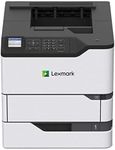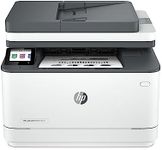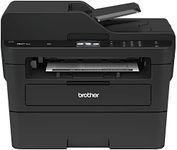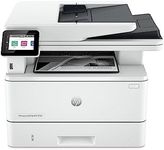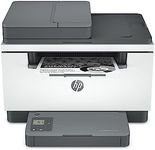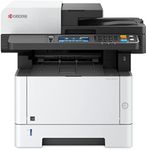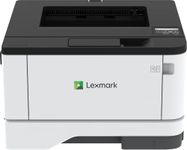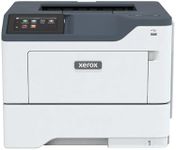Buying Guide for the Best Mono Laser Printers
Choosing a mono-laser printer can be a smart move if you mostly print text documents and want fast, reliable, and cost-effective printing. Mono-laser printers use only black toner, making them ideal for offices, students, or anyone who doesn’t need color prints. To find the best fit, it’s important to understand the key features and how they relate to your printing habits. Think about how much you print, the types of documents you handle, and whether you need extra features like scanning or wireless printing.Print Speed (Pages Per Minute, PPM)Print speed tells you how many pages the printer can produce in one minute. This is important if you often print large documents or need quick results. Lower speeds (around 20 PPM or less) are fine for occasional home use, while higher speeds (30 PPM and above) are better for busy offices or shared environments. Consider how often you print and how much waiting time matters to you—if you print a lot, a faster printer will save you time.
Print Resolution (DPI)Print resolution, measured in dots per inch (DPI), affects how sharp and clear your prints look. Higher DPI means crisper text and better detail, which is important for professional documents or small fonts. Basic printers offer around 600 x 600 DPI, which is good for everyday text, while higher-end models may go up to 1200 x 1200 DPI or more for extra clarity. If you mostly print standard documents, basic resolution is enough, but if you need sharp graphics or small text, look for higher DPI.
Duty CycleDuty cycle is the maximum number of pages a printer can handle in a month without problems. This helps you match the printer to your workload. Light-duty printers are fine for a few hundred pages per month, while heavy-duty models can handle thousands. Estimate your monthly printing and choose a printer with a duty cycle comfortably above that number to ensure reliability and long life.
Connectivity OptionsConnectivity refers to how you connect your printer to your devices. Common options include USB, Ethernet, and Wi-Fi. USB is simple for single-computer use, Ethernet is good for shared office networks, and Wi-Fi allows wireless printing from laptops, phones, or tablets. If you want to print from multiple devices or wirelessly, make sure the printer supports Wi-Fi or network connections.
Paper HandlingPaper handling covers the types and sizes of paper the printer can use, as well as the size of the input tray. Some printers only handle standard letter or A4 paper, while others can print on envelopes, labels, or legal-size sheets. Tray capacity matters if you print a lot—smaller trays (around 150 sheets) need more frequent refilling, while larger trays (250 sheets or more) are better for heavy use. Think about the types of documents you print and how often you want to refill the tray.
Additional Features (Duplex, Scanner, etc.)Some mono-laser printers offer extra features like automatic duplex (double-sided) printing, built-in scanners, or fax capability. Duplex printing saves paper and is useful for reports or booklets. All-in-one models with scanning and copying are handy if you need to digitize or duplicate documents. Decide which features match your workflow—if you only print, a basic model is fine, but if you need more, look for these extras.
Toner Cost and YieldToner cost and yield refer to how much you’ll spend on replacement toner and how many pages each cartridge can print. High-yield cartridges last longer and reduce the hassle of frequent changes. Check the estimated page yield and compare it to your printing habits. If you print a lot, a printer with affordable, high-yield toner will save you money and effort over time.




